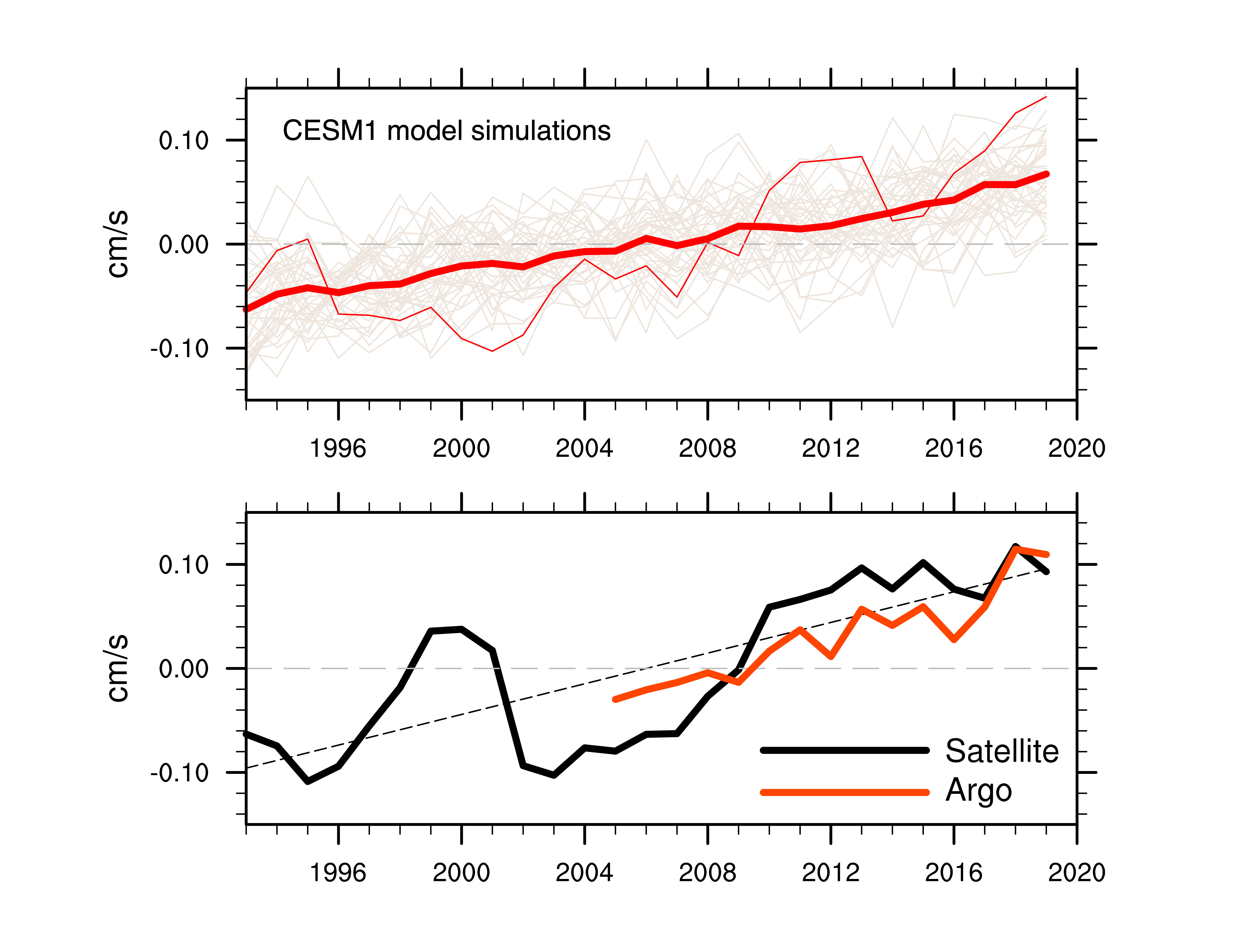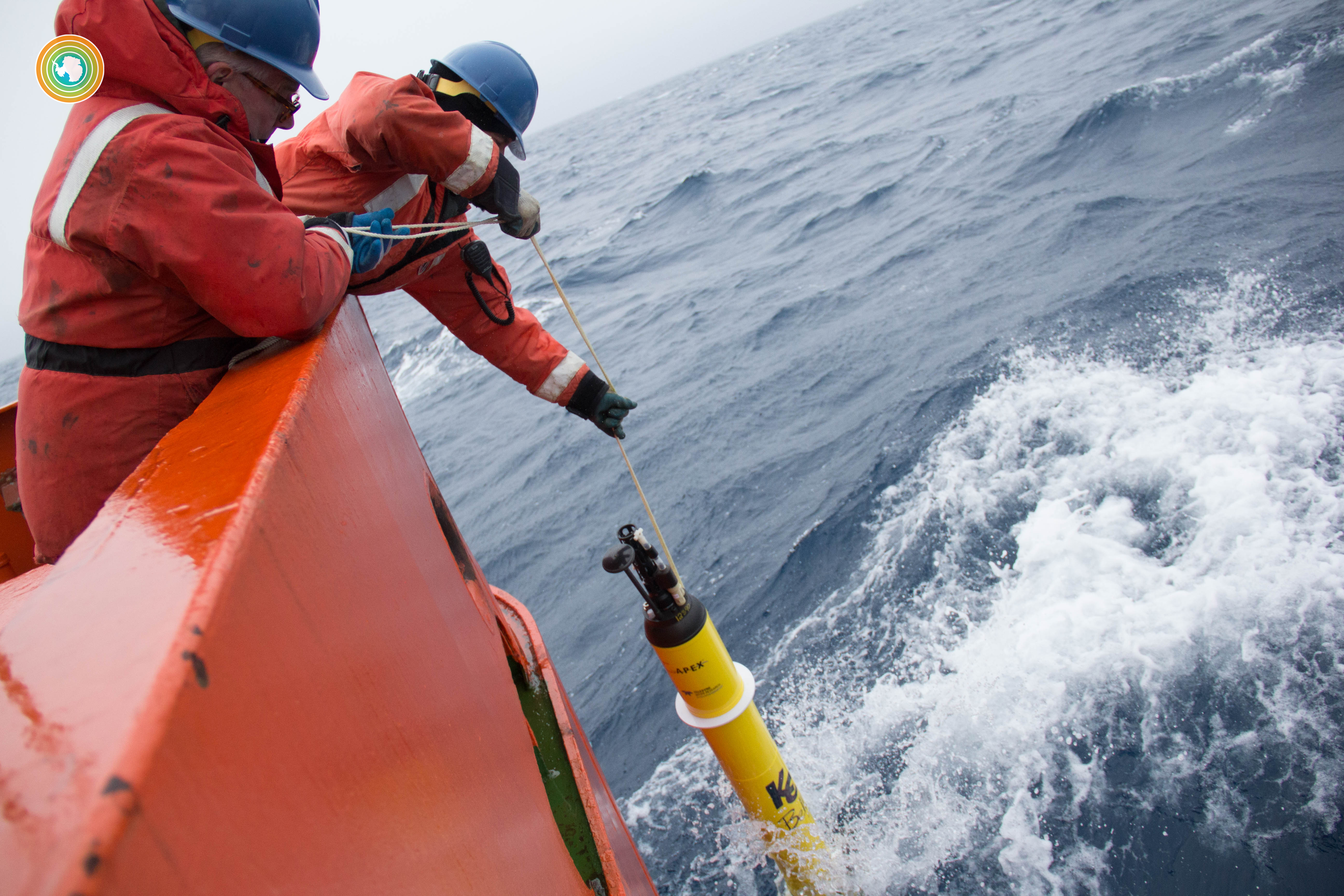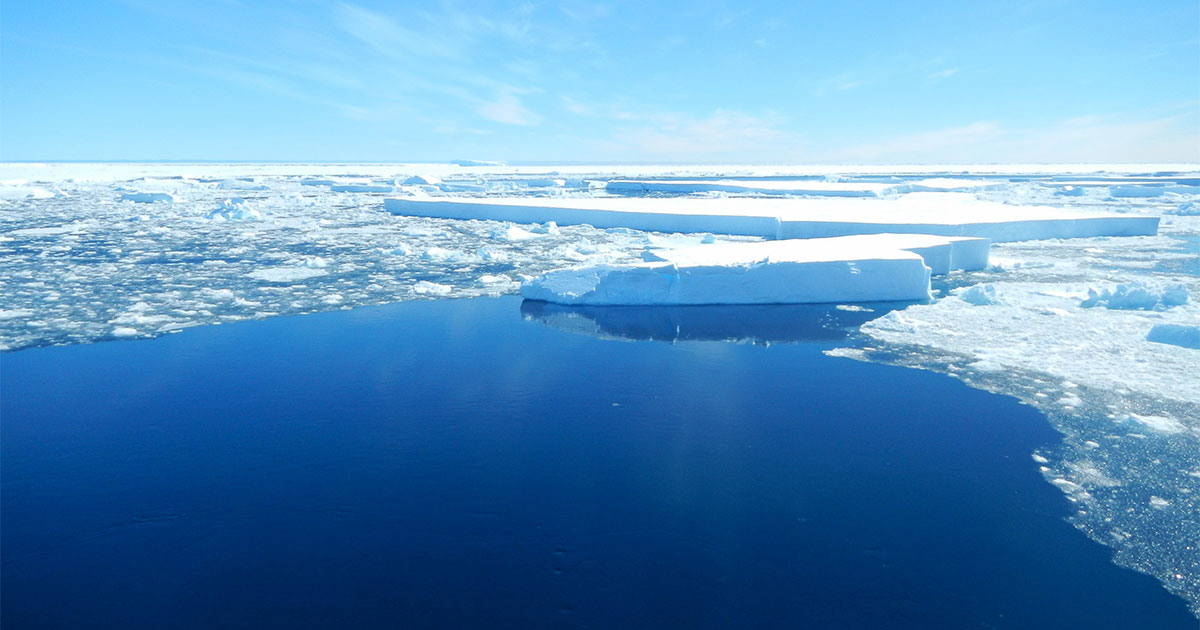The Southern Ocean is far from major population centers but has emerged as a major player in the global climate system by absorbing vast amounts of human-induced heat and CO2. The upwelling process in the Southern Ocean brings rich nutrients to the surface and fertilizes three-quarters of the biological productivity of the global ocean. The Antarctic Circumpolar Current, the only ocean current that circumnavigates the planet, is the primary agent that transports various oceanographic properties such as heat, salt, and nutrients between the Atlantic, Indian and Pacific basins. Recent observations have revealed that the Antarctic Circumpolar Current is speeding up and, this acceleration is due to ocean warming as a result of human activities.
Recent and Modern Observations in the Southern Ocean
Until recently, the Southern Ocean was among the most poorly sampled regions of the global ocean not only due to its remote location but also its severe environmental conditions such as the strong westerly winds, storms, high waves, sea ice, and strong ocean currents.

Acceleration of Southern Ocean flow (48˚S-58˚S in latitudes) from model simulations (upper panel) and observations (bottom panel). (Image credit: Shi et al. 2021)
Satellite observations began to improve this situation in the early 1990s. In particular, satellite-mounted microwave altimeters have accurately measured sea surface height since 1992. Sea level, averaged over the globe, has risen at a rate of 0.33 centimeters per year from 1993 to 2019. This has mainly been caused by melting of glaciers and ice sheets, and by the ocean expanding as the water warms. It has been found that the sea level in the Southern Ocean experienced a big and significant change due to the change of ocean heat content, the energy stored within the ocean. This heat content change can be measured by the network of autonomous Argo floats, which profile ocean conditions such as temperature and salinity from the surface down to 2,000-meters depth. The global Argo network began in 1999 and reached full capacity in 2007. There are currently 4,000 floats scattered across the world’s oceans that are collecting data. Without direct measurements of ocean velocity, the collected temperature and salinity can be used to estimate the upper layer velocity relative to a certain depth, say 2,000 meters.
Southern Ocean Flow Acceleration Due to Ocean Warming
Its unique structure and physical processes make the Southern Ocean a major reservoir of anthropogenic heat. For instance, the Antarctic Circumpolar Current separates cold water in the south from warmer subtropical water just to its north, and this warmer flank of the Southern Ocean takes up more heat associated with human activities than its cooler flank. As the gradient between warm and cold water increases, the currents that border them speed up. The speedup of the Antarctic Circumpolar Current is centered on its Subantarctic Front.

(Image credit: SOCCOM Project, Princeton University)
Prevailing westerly wind over the Southern Ocean also has sped up in the context of global warming. However, climate models show that the wind speedup only plays a secondary role in accelerating ocean currents. The acceleration largely results from uneven warming of the ocean. It is also worth noting that the speedup of the Antarctic Circumpolar Current has just emerged from the background noise, taking advantage of the longer and extending observations in the water and from space. The observed change, together with corroborating climate model simulations, indicates that the speedup of the planet’s most powerful ocean flow is a response to human activities.
Perspectives
The remote Southern Ocean is responding to and shaping global climate change in important ways. For example, faster ocean circulation can alter the ocean’s property distributions and change how nutrients are carried across ocean basins and around the world, with important effects on marine lives and global ecosystems. Expanding deployments of biogeochemical floats will help us detect additional human impacts within the ocean, including acidification, and changes in nutrient and oxygen distributions. The researchers from the Southern Ocean Carbon and Climate Observations and Modeling (SOCCOM) project are actively involved in efforts to develop a global biogeochemical observing system of ~1,000 Argo floats equipped with SOCCOM-type biogeochemical sensors. It’s important to note that the Southern Ocean zonal flow acceleration is expected to continue, given the continued uptake of anthropogenic heat by the Southern Ocean. In addition to setting the pace of global warming, the Southern Ocean heat uptake is a key driver for atmospheric circulation change between the Northern and Southern Hemispheres. Enhanced and sustained observations, together with model simulations, will offer better views of human footprints deeply hidden in the remotest seas.
To read more about Southern Ocean flow acceleration, please see Shi, J.-R., L. D. Talley, S.-P. Xie, Q. Peng, and W. Liu, (2021): Ocean warming and accelerating Southern Ocean zonal flow. Nat. Clim. Chang., 11, 1090–1097.
The research project Southern Ocean Carbon and Climate Observations and Modeling (SOCCOM) aims to unlock the mysteries of the Southern Ocean and determine its influence on climate by utilizing cutting-edge observations and modeling studies. Find more information about the SOCCOM project: https://soccom.princeton.edu.
This feature appeared in Environment, Coastal & Offshore (ECO) Magazine's 2022 Spring edition, to read more access the magazine here.





